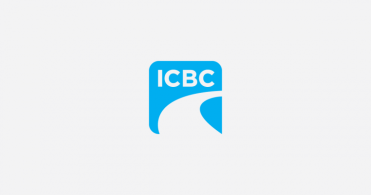- Managing your Practice
-
- Your Benefits
-

Introducing the ultimate Club MD experience
From work to play, and everything in between, we provide you with access to hundreds of deals from recognizable, best-in-class brands, elevating every facet of your life – from practice supports to entertainment, restaurants, electronics, travel, health and wellness, and more. Your Club MD membership ensures that these deals are exclusive to you, eliminating the need to search or negotiate.
Welcome to the ultimate Club MD experience. Your membership, your choices, your journey.
-
- Advocacy & Policy
-
- Collaboration
- News & Events
-

Stay Informed
Stay up to date with important information that impacts the profession and your practice. Doctors of BC provides a range of newsletters that target areas of interest to you.
Subscribe to the President's Letter
Subscribe to Newsletters
-
- About Us
-
Doctors of BC responds to misinformation regarding ICBC changes
February 14, 2019
News
Doctors of BC has been made aware there are letters, flyers and other types of communications being sent to physicians that may contain misleading and inaccurate information about new ICBC regulations for treatment of patients, which come into effect April 1.
Some of the letters claim the new process will decrease or limit patient care and restrict physicians from making independent medical decisions. In fact, this is not the case.

Under the new legislation, the overall allowance for medical care and recovery expenses will double to $300,000 to better support patients injured in a crash. ICBC will also pay more per treatment based on fair market rates and customers will no longer be out-of-pocket for most expenses.
The enhanced care model includes more choice in types of treatments, including kinesiology, acupuncture, massage therapy and counselling.
It’s important to note that the new payout limit of $5,500 only applies to compensation for the emotional distress and inconvenience of being in the crash (pain and suffering) portion of a claim, and does not affect any other aspects such as wage loss or medical care. Furthermore, doctors will have full autonomy to recommend their diagnosis to ICBC.
Please be aware if you receive materials of this nature they may contain false information and are intended to encourage you to not support these changes or influence how you describe your diagnosis.
Our primary goal during this process is to ensure that physicians maintain clinical autonomy, and have access to accurate information to effectively adapt to these changes while continuing to deliver the best patient care possible.
For more information on how ICBC’s new care model will affect you and your practice, click here.
Doctors of BC was consulted on some aspects of these changes and supports ICBC’s new model of care as it emphasizes early intervention, early recovery and fairer rates for treatment providers.
Doctors of BC is not taking a position on the changes related to payments for pain and suffering occurring from a motor vehicle accident. In the future, we will continue to collaborate with ICBC to raise any issues that may arrive from this new process on behalf of the profession.
Frequently asked questions
How is the new cap of $5,500 applied to my patients?
The new regulations for patients with minor injuries will include a cap on the cash payout offered by ICBC for pain and suffering. It’s important to note that the payout limit of $5,500 only applies to compensation for the emotional distress and inconvenience of being in the crash (pain and suffering) portion of a claim, and does not affect any other aspects such as wage loss or medical care. In addition, patients will be entitled to medical treatments, wage loss and home maker benefits.
The enhanced care model includes more choice in types of treatments, including kinesiology, acupuncture, massage therapy and counselling.
The overall allowance for medical care and recovery expenses will double to $300,000 to better support patients injured in a crash. ICBC will also pay more per treatment based on fair market rates and customers will no longer be out-of-pocket for most expenses.
Who decides if my patient has a minor injury?
Physicians will provide a diagnosis to ICBC, and based on the new regulations, ICBC will make an assessment on the patient’s minor injury classification. It is important to note that a diagnosis may change over the course of the injury, and ICBC will accept new information to support a changing prognosis. If the patient disputes ICBC’s assessment about their injury claim, an independent dispute resolution process will take place through the Civil Resolution Tribunal (CRT) for crashes occurring after April 1, 2019.
What if my patient has a minor injury for longer than 12 months?
If a minor injury causes serious impairment beyond 12 months, it will no longer be subject to the payment limit on pain and suffering.
What about forms and reports?
As of April 1, 2019, the CL-19 form will be discontinued. A new set of forms, designed with physician input, will be introduced and align with the needs of your patient. These new forms will also integrate with your EMR and serve as the patient record thereby eliminating the duplication of patient records.




